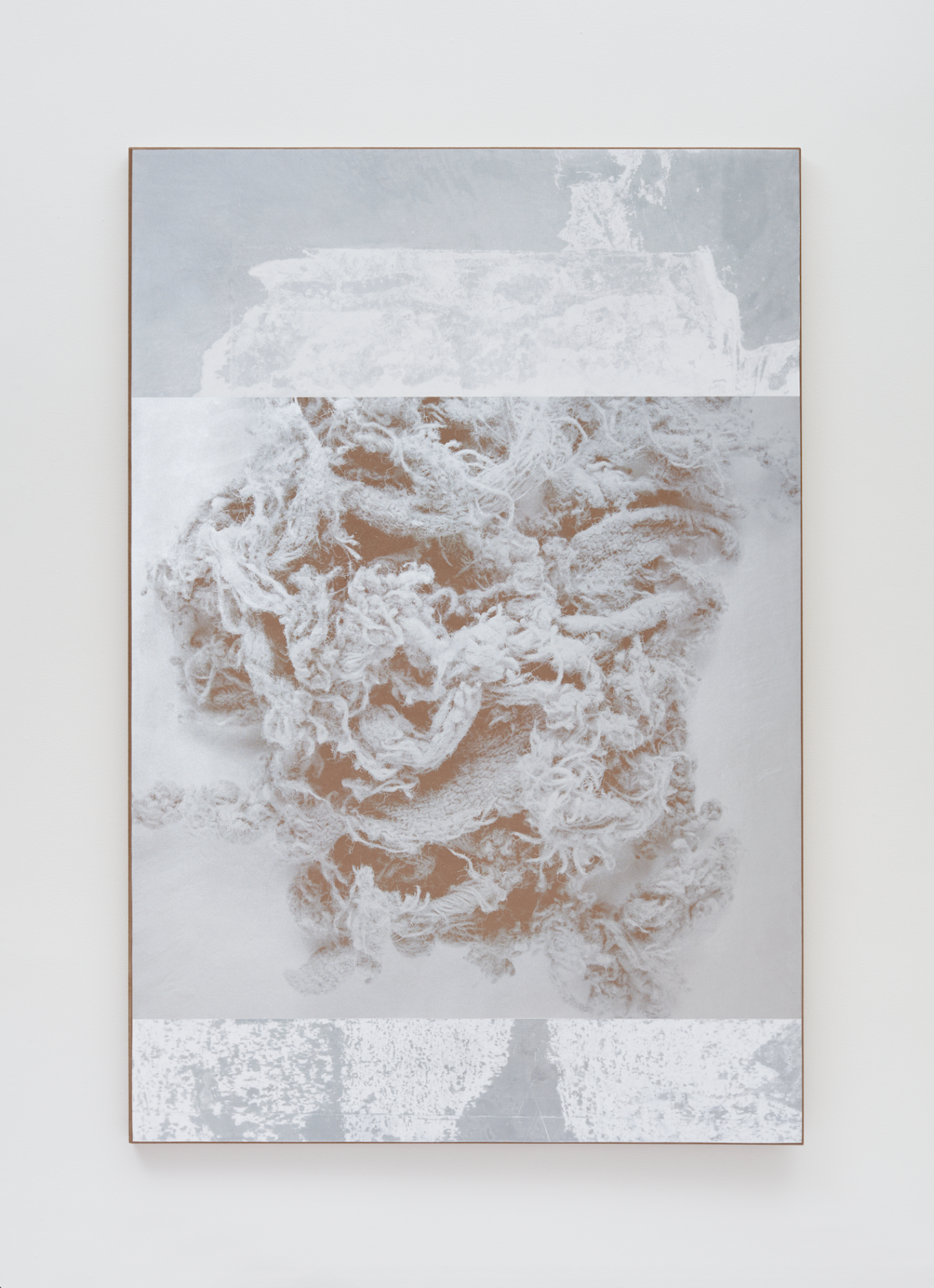
In the morning, I walk through my neighborhood and enter an opening into the forest. After a few steps, I leave the main path and discover a nice slice of earth, undisturbed by the traffic of human footsteps. Here the soil looks new and loamy, like crumbles of chocolate cake. I remove a metal spoon from my pocket, slide it as deeply as I can into the ground and extract a nice rounded heap.
After picking out a pebble and pine needle, I drop this sample into my water bottle and shake vigorously until my arms become tired. When I twist open the lid and peer inside, the contents don’t seem to have mixed in the way I’d expected—like, say, chocolate milk—but instead, each particle has stayed stubbornly discrete, insoluble, suspended and spinning in a clear vortex.
The soil around here varies in color, from fecal brown to fawn to oat to burnt sienna, and the constellation of soil in my bottle seems to contain a thousand shades. Probably, if I let my cocktail sit for a few hours, the water and soil would eventually merge into a uniformly dark mud smoothie, but I don’t: I drink it right there in the woods.
The taste of dirt is familiar to us all—an accidental spice on a carrot, a distant note of terroir in a glass of wine—but as a primary dish, the earth is an alien flavor. Clearly, spoonfuls of soil from across the world will vary in their composition—chalk, for instance, would be a very different snack than peat—but most soil is packed with tannins, polyphenols from dead plants that create that perennial brownish tint. In psychology, brown is considered to evoke feelings of strength and warmth, but also isolation and desolation. Most people generally dismiss brown as an ugly color, and yet it is consistently one of the most popular choices for our homes and clothing. We love-hate the earth at our feet.
In my mouth, the rest impression of the soil is of metallic minerals. I’m no pedologist, but this is probably a silty soil, rather than sandy (lighter) or clayey (darker) soil. This means it’s likely filled with calcium, sulfur, and magnesium, which I take in supplemental form. More than taste, though, I notice the mouthfeel of a swirling storm of grains, some dissolving, some intact, some rock-hard. I had initially considered chewing the soil on its own, and now I can see how right I was to not to do that. I could have choked.
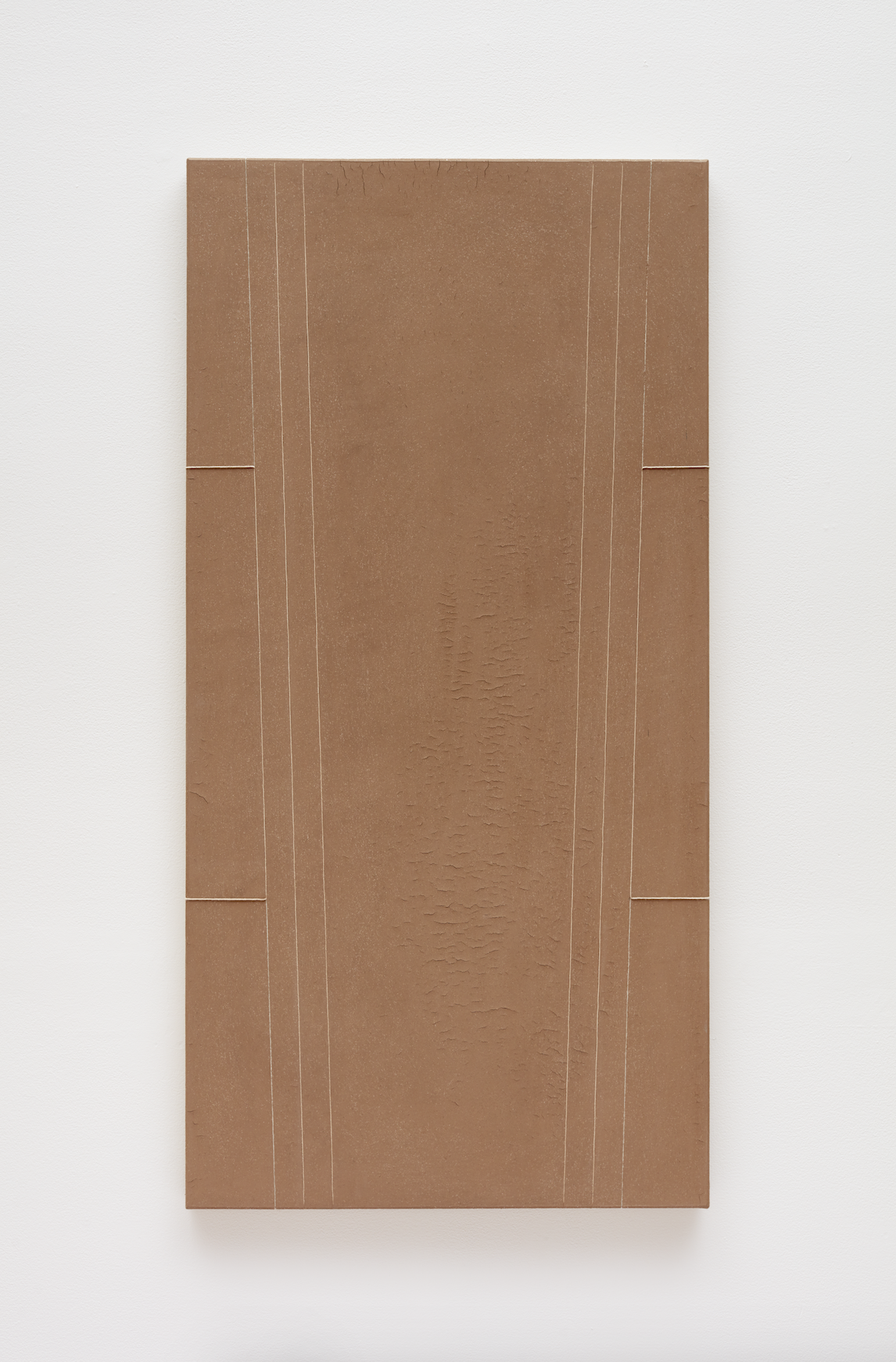
©N. Dash Courtesy the artist and Casey Kaplan, New York.
As the beverage passes over my palate, the primary taste arises: distinctly astringent—as tannins tend to be—which gives that sensation of tingling dryness, even with the water. I sense it on the deepest part of my tongue, the place activated by black tea and dark chocolate, behind the bitter taste receptors. Then, farther back, near the tonsils, is the subtle sting of acidity, which, as I understand it, is the pH required for this kind of ecosystem. Overall, it’s not bad.
When the soil moves down my throat, I feel it scratch gently against my esophagus—a light sloughing of dead cells—and slide into my stomach. Fear jabs at me: did I accidentally consume some foreign object? A hungry parasite? A shard of glass? I regard the forest around me, now feeling as if I have just had an intimate, possibly dangerous experience with it. Eating is a way to merge with food. Like a sexual act, it contains risk and pleasure, a kind of communion: sacred and profane.
I notice some old-growth redwoods, some new firs and oaks. Every inch of this forest is verdant—the walls, ground, and canopy, up where an entirely different ecosystem thrives, raining down onto the forest floor, accumulating over time, like layers of delicious cake beneath my feet.
This is my first time consuming straight dirt—though, like everyone, I’ve been eating trace amounts of it for years in my vitamins and meals. Grocery stores sell washed produce so consumers don’t consider their food dirty, but at farmers’ markets, produce arrives with generous portions of soil. One time, after a shopping at a CSA, I looked in my bag and found a clod that outweighed and outsized the beet I’d purchased. I had paid a dollar for it.
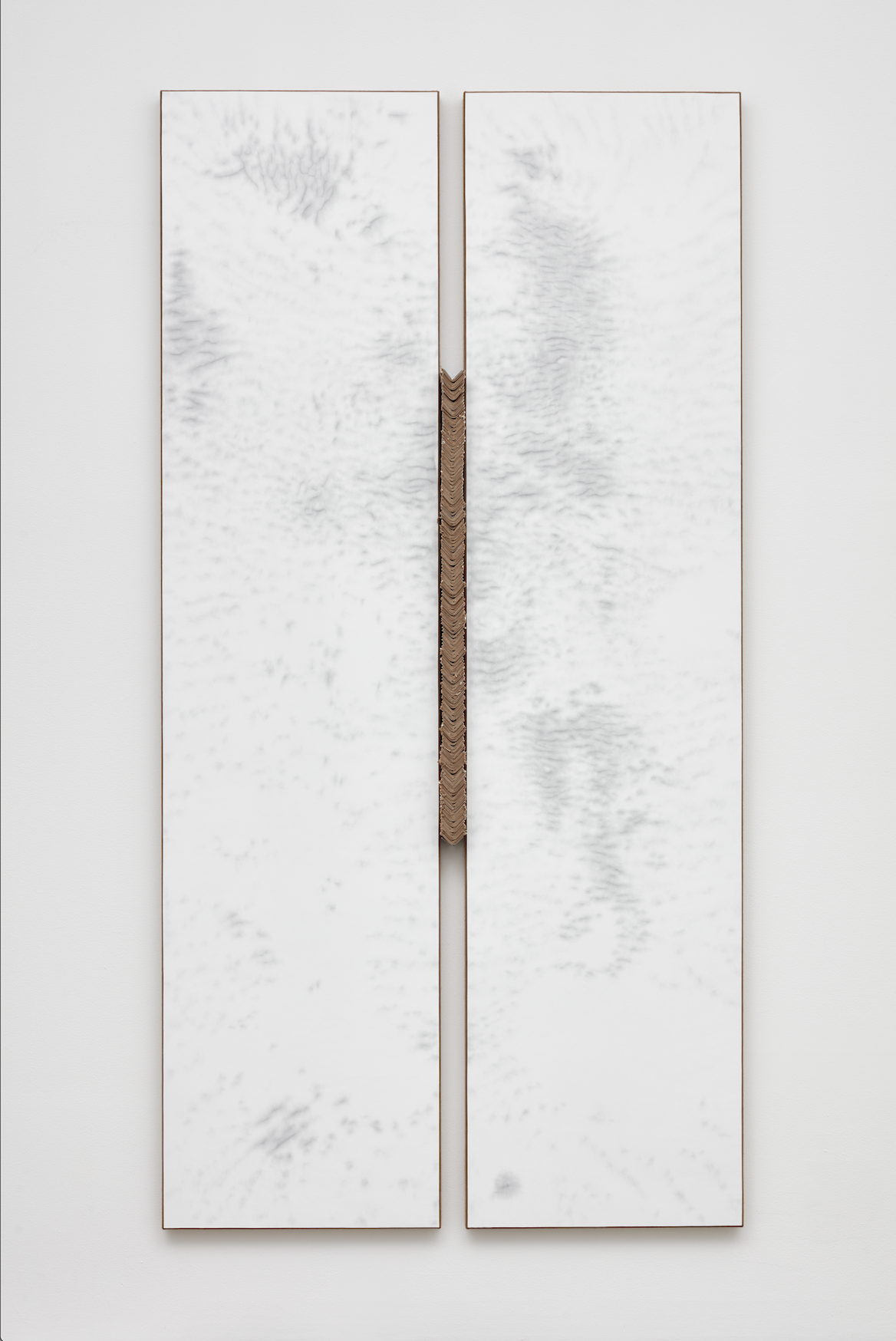
If you eat earthen items on their own, however, it’s a syndrome: geophagia, which is considered disturbing in some places and encouraged in others, like Zambia, where women eat mud cakes during pregnancy to ease birth. But you can visit any health-food store in America and buy bentonite clay, to eat or apply to your face to extract toxins. I sometimes brush my teeth with it.
Children often develop a condition called pica in which they swallow earth, hair, rocks, and other fun indigestibles. It’s good if they do this a little, to stimulate their immunity, but it’s diagnosable if they do it too much. Animals eat soil, too: chimpanzees, elephants, bats, worms. The debris and mineral flecks act as a fiber that aids digestion. Every afternoon, I look out my window and see blue scrub jays taking dirt baths in my planters, opening their
mouths wide as they do so, hoping to get a little taste of their bath. Geophagy is all around us. All our food, in some way, comes from soil, and the word soil actually comes from the French word saouler, which means to satiate.
After my breakfast, I lie down and observe if the particles of the forest are enjoying my nervous system. I feel the flickers of my body and try to determine if these are new rings from the electricity in the soil. I think about how, in electrical circuits, “earth” is the fundamental point from which voltage is measured, and how one way of grounding a circuit is to literally drive a conductive rod into the earth. Underground, water is the great conductor of electricity, and the levels of this conductivity will determine the species of ora that emerge from a region. Soil with high salinity would have an even higher conductivity, though my soil drink did not taste particularly salty to me.
Twenty minutes later, I notice a gentle rise in my temperature, a normal response after meals. I don’t recall this soil being hot or cold; probably it was tepid, though I have touched plenty of piles of compost that were hot from all the feasting bacteria. Even just a handful of lukewarm soil contains ten thousand species and a hundred billion individual specimens of bacteria, many of which are unknown to science. The known ones include algae, protozoa, nematodes, and tardigrades, which are those aqueous micro-animals that look like bears and can live through extreme temperatures. As I write, all these organisms are mingling with my microbiome, maybe changing my interior community forever. They say the health of the soil around us is a mirror to the health of our gut—as below, so inside.
This is to say that soil is not a thing; it’s all things, and nothing can resist becoming assimilated by it. We are all soil one day. So, in one bite, I ate millions of living organisms and as many rotting micro-corpses; I ate fresh eggs and dead animals and dead people, rocks and gases, and human-made items that may never fully decompose, like polymers and pharmaceuticals. I ate the remnants of last year’s historic flood, which submerged this entire region and destroyed part of our home, including my painting studio. The river water rose, flooding septic tanks and pesticide-drenched farmlands, all of it mixing into a toxic slurry that coated every inch of our yard and filled the basement with five feet of fluid. I ate the landslide that happened after the flood, a gray slop with mottled orange highlights that blocked half the road for months. I ate ancient grains of dirt from the beginning of time and hundred-year-old sawdust from the excessive logging that gave this place its first colonial name: Stumptown. I ate carbon flakes of the indigenous people of the area, the Pomo, which means “people living at red earth hole,” probably a reference to the reddish hue the soil gets from iron oxide. I ate nodes of a mycelial network, the underground brain-like system of mushrooms that holds vast forms of intelligence and awareness with- in the soil. But can I access that knowledge through my gastrointestinal tract, or does the hydrochloric acid destroy that communication?
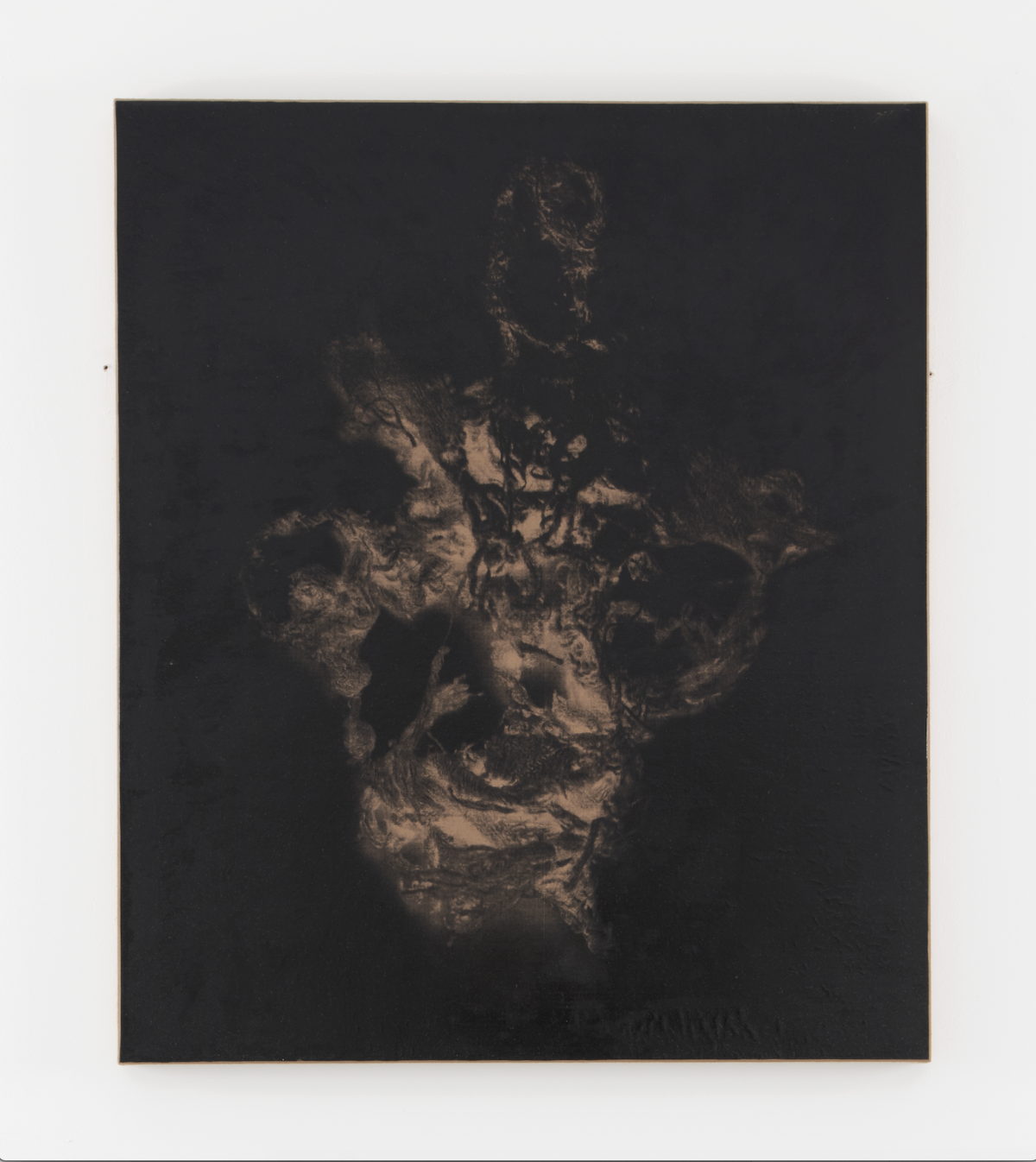
Traditional Chinese medicine says that when you eat chicken, you absorb chicken energy. St. Augustine says that if you contemplate a stone, you become like a stone. The poet CA Conrad gathered the dirt from the yard of Emily Dickinson’s home, slathered their body in it, and wrote a poem channeling the consciousness of Dickinson.
Now, I am writing this piece still possessed by my dose of soil, as my way of capturing the experience in language. Many hours have gone by during which my body has been accommodating this bizarre dietary aberration. When I eat lunch, the new food stimulates my gastrocolic re ux and ignites the motility in my gut, pushing the dirt out of my stomach and into my small intestine, which pushes my dinner into my large intestine. The earth inside me no longer looks like itself and appears simply like the rest of my waste, which will likely leave my body in the morning after breakfast.
As I have been writing this, I notice my use of the word dirt, which I use interchangeably with the word soil. This is largely an American usage, and clearly there’s something wrong with the conflation of these two terms. As a noun, dirt is any kind of filth—dust, grime, soot—and it’s something to be generally avoided in polite society. As a verb, soiling something is to ruin it, and I usually hear the term in the phrase “soiling one’s pants,” (one of the most publicly shameful forms of being unclean) or even “soiling a person’s reputation” (the end of that personality’s purity in our culture). This is the how we regard the most precious resource on earth, the substrate from which life is born and dies, the closest thing we have to a total, unifying matter on this little blue planet.
That night, as the soil’s undigested parts migrate toward my exit, I experience a nightmare: I swallow a frog-based drug and immediately become paralyzed by it, falling to the floor. My mother rushes to catch me. It’s horrifying, and I wake into another dream, in which I am speaking to an older, sordid-seeming man in a descending elevator. “Have you ever been trapped inside a dream?” I ask him.
James Hillman’s book Dream and the Underworld depicts two worlds running in parallel: our day-world, where we spend our waking lives, and the underworld, where we dream, where our myths are born, and where our day-logic is useless. At night, we become aware of the underworld, but this shadow world always exists, all day long, just as the day-world continues to exist while we dream. Separating these worlds is soil.
In many cultures, the subterranean is the prime source of the unseeable. Shamans from Siberia to Brazil refer to the “lower world” as a place that can be visited in trance states for knowledge, and shamanism itself is a kind of earth worship—as is animism, perhaps the world’s most foundational belief pattern. Across the world, the sky is a source of male energy (the locus of Zeus, the Abrahamic God, and the Chinese concept of yang), while the earth is the source of female energy (Gaia, the Hindu god Bhumi, and yin), which has the quality of darkness and mystery, and is expressed in the organ of the stomach.
When I dug my spoon into the earth, I didn’t get very far, though. Maybe a few inches. I just wanted to go past the humus and get to a little bit of the secret below. But I’d have to dig about four thousand miles to reach the center of the earth, which is a place as foreign to us as outer space. In the 1960s, around the space-race era, the Soviets started digging a hole the size of a salad plate. It took nineteen years to go seven and a half miles downward, only always through the outer crust. This is known as the Kola Superdeep Borehole, the deepest artificial point on earth, and it’s the closest we’ve come to Hades and Persephone, the underworld gods of the death and plants.
We have barely entered our own earth. Meanwhile, as I’m writing this, Voyager 1 is 11.7 billion miles into space. Still, the accepted contemporary worldview is that we understand the world below us. Scientists swear the hollow earth theory of the seventeenth century, in which another world exists at the earth’s core, is ridiculous, and that the Buddhist underground land, Shambhala, cannot possibly exist. But even now, in our information-filled world, the ground right at our feet remains an entry point into the unknown, as potent an expression of the divine as the sky above, a site of endless interior exploration.
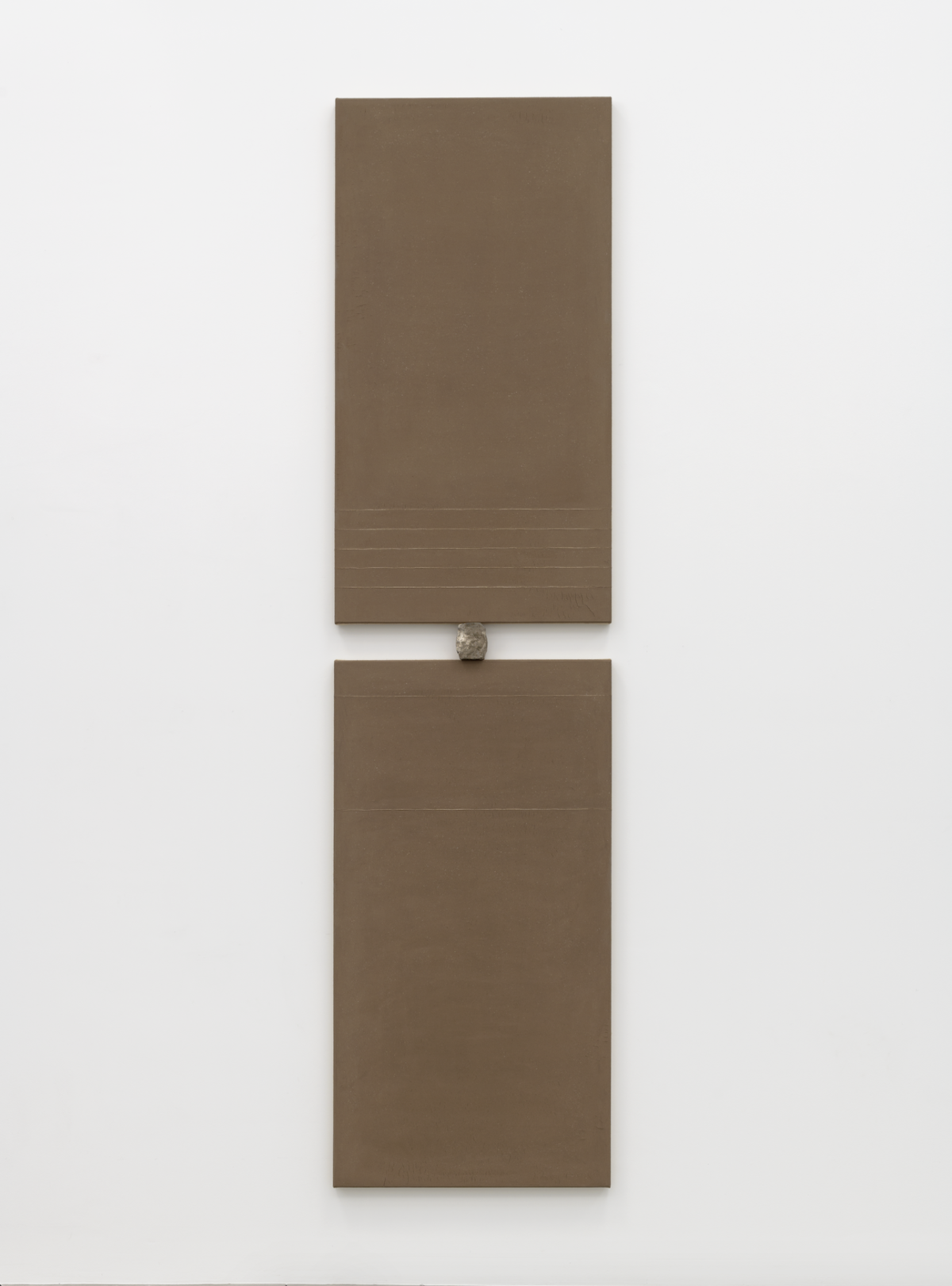
This essay appears in N.Dash, the first monograph by the artist of the same name, published by Hatje Cantz, published in October.




